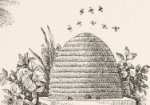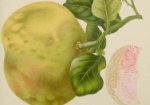Local artisan brewer, Young Henry’s have concocted a special brew to celebrate our exhibition Eat your history: a shared table which opens this weekend at the Museum of Sydney. Its novel name, Porky’s Peach Prescription, hints at its historical connections with early colonial Sydney.
Seeding an idea
While chatting to boutique brewer and Young Henry’s co-founder, Richard Adamson, about our next Colonial Gastronomy event – Farewell Darling! dinner at Vaucluse House, and what colonists were drinking in the early 1800s, Richard became quite intrigued about the efforts early settlers made to introduce European honey bees to the colony. Not only would they be useful for any wax and honey they would produce, more importantly to the early agriculturalists, European bees were necessary to pollinate introduced crops and fruit trees. The many attempts to establish a successful colony of honey bees were unfruitful (excuse the pun) until the 1830s, frustrating farmers for several decades.
And what have bees to do with drinking? you may be wondering…
Native bees and other insects must have been doing their bit, as many varieties of citrus, figs, grapes, apples and stone fruit etc were producing fruit, but not necessarily ‘to perfection’. Honey bee historian – yes, there is one – Peter Barrett, author of Immigrant Bees 1788 to 1898, noted that apples ‘would be full enough in some quarters, but aborted and shrunken in others’, probably due to the flowers not being pollinated effectively, in season. But while fruit might be ‘imperfect’ for market, they would be ideal for making cider! Samuel Marsden, for example, at his property on the Parramatta river near Ryde, produced 60 gallons of cider in 1803.
Peachy keen!
One fruit that grew in abundance in Sydney was the peach, evidently without the introduced bees’ assistance. William Charles Wentworth noted in 1819, ‘Of all the fruits which I have thus enumerated as being produced in this colony, the peach is the most abundant and the most useful… Cider also is made in great quantities from this fruit, and when of sufficient age, affords a very pleasant and wholesome beverage.’ Later, in 1830, Wentworth was growing peaches on his harbourside Vaucluse estate, announced in The Australian newspaper (which admittedly he co-owned): ‘In this garden grows the most delicious fruit in the colony…. [a] Peach grown [at Vaucluse]… measuring nine inches in circumference.’ That’s a girth of almost 23cm!
Happy as a pig in – peaches!
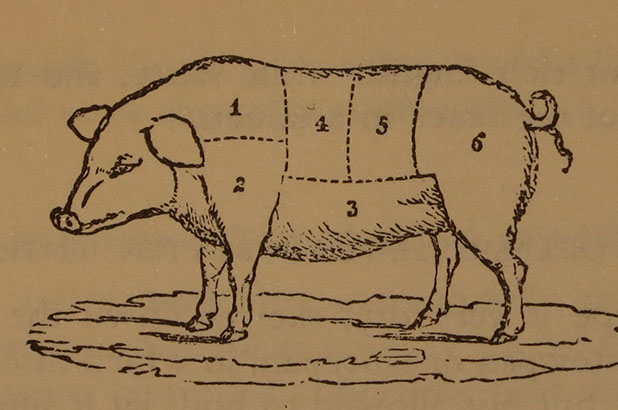
Pork illustrated in Eliza Acton, Modern cookery for private families, Southover Press, Lewes, 1993 (1st ed.1845), p218. Caroline Simpson Library & Research Collection, Sydney Living Museums
So plentiful, according to Wentworth and other colonial diarists, that farmers would feed them to their pigs – perhaps because there were simply more than they could manage to brew?
… so plentiful throughout the colony, that they are every where given as food to hogs; and when thrown into heaps, and allowed to undergo a proper degree of fermentation, are found to fatten them very rapidly.
The lees, too, [from cider-making] after the extraction of the juice, possess the same fattening properties, and are equally calculated as food for hogs.
A long-standing tradition
It appears that history has a long habit of repeating itself: from The Sydney Morning Herald‘s Column 8 in 1966:
Camden park, long famous for its special milk, now employs a herd of aristocratic landrace and large white pigs to pick up the fallen fruit in its 100 acre orchard. This used to be a laborious and costly job but the pigs do it with utmost efficiency and for love. Their first preference is peaches, and peach-fed pork should delight the heart of the epicure.
December 20, 1966
The Macarthur family has had farming interests in Camden since John Macarthur secured a sizeable land grant there in 1806, with their estate house Camden Park, being completed in 1835. Feeding peaches to their pigs has also been a long tradition, according to Elizabeth Macarthur who wrote in 1816 of the success of their orchards at Elizabeth Farm, ‘We have an abundance, even to profusion, in so much that our Pigs are fed on Peaches, Apricots and Melons in the season’. It seems a logical step, and a great labour saving method (especially without the help of convict labourers to gather the fallen fruit) to release the pigs into the orchards to tidy up the fermenting mess in the summer sun.
Can pigs hiccup? We thinks they’d have been half pickled by the end of the season….
Peachy pork
Ingredients
- 330ml (1 1/3 cups) apple cider
- 2 tablespoons brown sugar
- 4 pork cutlets (or butterflied pork steaks)
- 2 tablespoons olive oil
- 1 Small red onion, finely sliced
- 1 tablespoon fresh ginger, finely chopped
- 2 cloves garlic, crushed
- 250ml (1 cup) peach nectar
- 2 whole cloves
- 2 freestone peaches, washed and each cut into 6 segments, stones removed
- chilli vinegar (see recipe on this blog) or lemon juice, to taste
- coriander leaves, to garnish
Note
This dish revives the traditional (and very harmonious) agricultural marriage of pigs and peaches in the early colony.
Serves 4
Directions
| Mix 125 ml (1/2 cup) of the apple cider with the sugar and stir until the sugar dissolves. Season the pork with a pinch of salt and freshly ground pepper, pour the cider over and put the meat in the fridge for at least an hour to marinate. | |
| Meanwhile, to make the sauce, heat 1 tablespoon of the olive oil in a small saucepan over low heat and sauté the onion, garlic and ginger for 5–10 minutes or until the onion is translucent. Add the remaining cider and simmer for 15 minutes or until the aromats have softened, then add the peach nectar, cloves and a pinch of salt to taste. Cover the pan and cook over low heat for 15 minutes, then set aside to allow the flavours to develop. Preheat the oven to 180ºC (160ºC fan-forced). | |
| Drain and discard the marinade from the pork. Heat the remaining olive oil in a non-stick frying pan and cook the pork turning occasionally, until it has browned on all sides. Transfer the meat to a shallow ovenproof dish. Add 125 ml (1/2 cup) of water to deglaze the pan, then pour the liquid over the pork. Cover the baking dish tightly with foil and bake in the oven for 15–20 minutes or until the pork is cooked through (the time will depend on the thickness of the meat). Remove the pork from the oven and allow it to rest for 10 minutes. Add any pan juices to the sauce. | |
| While the meat is resting, gently reheat the sauce, removing the cloves. Add the peach and poach for 5–10 minutes or until softened to your liking. Add a good splash of chilli vinegar or lemon juice and season to taste. Arrange the pork on serving plates and spoon the sauce and peach slices over the meat. Garnish with coriander leaves. | |
Sources
Barrett, P. Immigrant Bees 1788 to 1898 p29
Wentworth, W.C. Statistical, historical, and political description of the colony of New South Wales and its dependents in Van Diemen’s Land. 1819
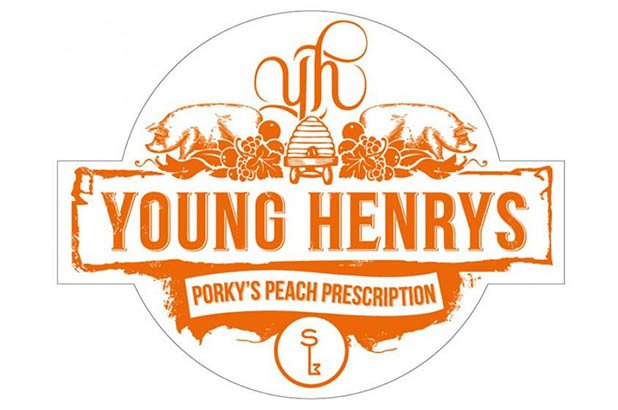
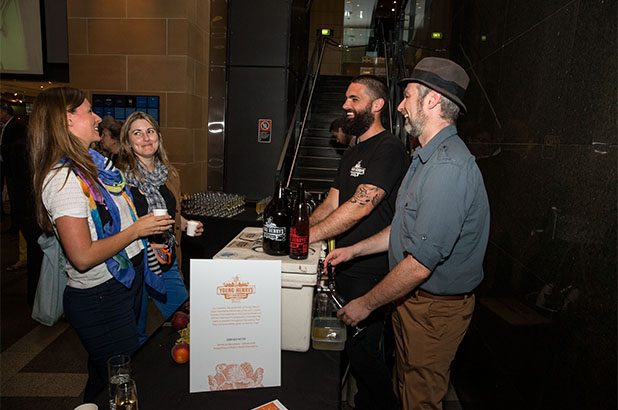
 Print recipe
Print recipe